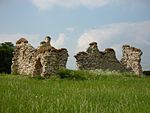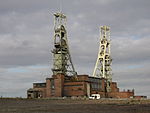Kings Clipstone
Civil parishes in NottinghamshireNewark and SherwoodSherwood ForestVillages in Nottinghamshire

Kings Clipstone is a settlement and civil parish, in the Newark and Sherwood district, in the county of Nottinghamshire, England. The parish lies in the west of the county, and north west within the district. It is 122 miles north of London, 15 miles north of the city of Nottingham, and 5 miles north east of the market town of Mansfield. In 2011 the parish had a population of 318. The parish touches Clipstone village, Edwinstowe, Rufford and Warsop. The parish was formerly part of the wider Clipstone parish, on 1 April 2011 it became a separate parish. The area is within Sherwood Forest, well known for the Robin Hood legend.
Excerpt from the Wikipedia article Kings Clipstone (License: CC BY-SA 3.0, Authors, Images).Kings Clipstone
Squires Lane, Newark and Sherwood Kings Clipstone
Geographical coordinates (GPS) Address Nearby Places Show on map
Geographical coordinates (GPS)
| Latitude | Longitude |
|---|---|
| N 53.176877 ° | E -1.1012808 ° |
Address
Squires Lane
Squires Lane
NG21 9BZ Newark and Sherwood, Kings Clipstone
England, United Kingdom
Open on Google Maps






